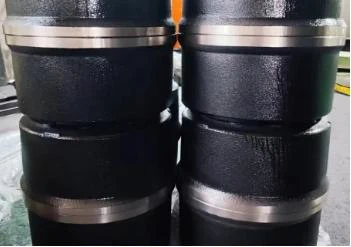
-
 Afrikaans
Afrikaans -
 Albanian
Albanian -
 Amharic
Amharic -
 Arabic
Arabic -
 Armenian
Armenian -
 Azerbaijani
Azerbaijani -
 Basque
Basque -
 Belarusian
Belarusian -
 Bengali
Bengali -
 Bosnian
Bosnian -
 Bulgarian
Bulgarian -
 Catalan
Catalan -
 Cebuano
Cebuano -
 Corsican
Corsican -
 Croatian
Croatian -
 Czech
Czech -
 Danish
Danish -
 Dutch
Dutch -
 English
English -
 Esperanto
Esperanto -
 Estonian
Estonian -
 Finnish
Finnish -
 French
French -
 Frisian
Frisian -
 Galician
Galician -
 Georgian
Georgian -
 German
German -
 Greek
Greek -
 Gujarati
Gujarati -
 Haitian Creole
Haitian Creole -
 hausa
hausa -
 hawaiian
hawaiian -
 Hebrew
Hebrew -
 Hindi
Hindi -
 Miao
Miao -
 Hungarian
Hungarian -
 Icelandic
Icelandic -
 igbo
igbo -
 Indonesian
Indonesian -
 irish
irish -
 Italian
Italian -
 Japanese
Japanese -
 Javanese
Javanese -
 Kannada
Kannada -
 kazakh
kazakh -
 Khmer
Khmer -
 Rwandese
Rwandese -
 Korean
Korean -
 Kurdish
Kurdish -
 Kyrgyz
Kyrgyz -
 Lao
Lao -
 Latin
Latin -
 Latvian
Latvian -
 Lithuanian
Lithuanian -
 Luxembourgish
Luxembourgish -
 Macedonian
Macedonian -
 Malgashi
Malgashi -
 Malay
Malay -
 Malayalam
Malayalam -
 Maltese
Maltese -
 Maori
Maori -
 Marathi
Marathi -
 Mongolian
Mongolian -
 Myanmar
Myanmar -
 Nepali
Nepali -
 Norwegian
Norwegian -
 Norwegian
Norwegian -
 Occitan
Occitan -
 Pashto
Pashto -
 Persian
Persian -
 Polish
Polish -
 Portuguese
Portuguese -
 Punjabi
Punjabi -
 Romanian
Romanian -
 Russian
Russian -
 Samoan
Samoan -
 Scottish Gaelic
Scottish Gaelic -
 Serbian
Serbian -
 Sesotho
Sesotho -
 Shona
Shona -
 Sindhi
Sindhi -
 Sinhala
Sinhala -
 Slovak
Slovak -
 Slovenian
Slovenian -
 Somali
Somali -
 Spanish
Spanish -
 Sundanese
Sundanese -
 Swahili
Swahili -
 Swedish
Swedish -
 Tagalog
Tagalog -
 Tajik
Tajik -
 Tamil
Tamil -
 Tatar
Tatar -
 Telugu
Telugu -
 Thai
Thai -
 Turkish
Turkish -
 Turkmen
Turkmen -
 Ukrainian
Ukrainian -
 Urdu
Urdu -
 Uighur
Uighur -
 Uzbek
Uzbek -
 Vietnamese
Vietnamese -
 Welsh
Welsh -
 Bantu
Bantu -
 Yiddish
Yiddish -
 Yoruba
Yoruba -
 Zulu
Zulu
Jan . 15, 2025 04:58
Back to list
car brake drum problems
Experiencing issues with car brake drums can be more than just a nuisance; it can be a significant safety concern that requires immediate attention. Understanding the complexities of brake drum problems allows vehicle owners to not only fix current issues but also prevent future ones. This article delves into the core of brake drum problems by sharing expert insights and real-world experiences, ensuring the information is credible and authoritative.
Brake fading—a reduction in braking power during extended use—is another critical issue with drums. This happens due to the brake drums’ inability to dissipate heat efficiently during heavy usage, such as when descending a long hill or during stop-and-go traffic. Incorporating advanced material drums or upgrading to high-performance units designed to withstand greater thermal loads can significantly mitigate this problem. Such recommendations are supported by automotive experts who emphasize innovation in brake technology for enhanced safety. In troubleshooting brake drum problems, understanding the signs of wear and tear is vital for drivers. Visual inspections should be part of regular vehicle maintenance, checking for visible cracks, scores, or any metal discoloration indicative of excessive heat exposure. Consulting with ASE-certified technicians can provide not only immediate solutions but also strategic long-term maintenance advice, reinforcing the vehicle's reliability and safety. Trustworthiness is paramount for vehicular safety. Sharing detailed experiences with brake drum failures, alongside professional advice, builds a foundation of trust between automotive professionals and vehicle owners. Each solution provided not only fixes existing problems but also educates owners on preventive care. This comprehensive awareness ensures that brake systems operate at their best, safeguarding everyone on the road. For all vehicle owners, addressing brake drum problems promptly by consulting with experienced auto repair professionals is essential. Regular maintenance and upgraded components can effectively prevent many brake issues. Armed with this knowledge, drivers can maintain their vehicles’ brake systems with confidence, ensuring that their journeys remain safe and worry-free.


Brake fading—a reduction in braking power during extended use—is another critical issue with drums. This happens due to the brake drums’ inability to dissipate heat efficiently during heavy usage, such as when descending a long hill or during stop-and-go traffic. Incorporating advanced material drums or upgrading to high-performance units designed to withstand greater thermal loads can significantly mitigate this problem. Such recommendations are supported by automotive experts who emphasize innovation in brake technology for enhanced safety. In troubleshooting brake drum problems, understanding the signs of wear and tear is vital for drivers. Visual inspections should be part of regular vehicle maintenance, checking for visible cracks, scores, or any metal discoloration indicative of excessive heat exposure. Consulting with ASE-certified technicians can provide not only immediate solutions but also strategic long-term maintenance advice, reinforcing the vehicle's reliability and safety. Trustworthiness is paramount for vehicular safety. Sharing detailed experiences with brake drum failures, alongside professional advice, builds a foundation of trust between automotive professionals and vehicle owners. Each solution provided not only fixes existing problems but also educates owners on preventive care. This comprehensive awareness ensures that brake systems operate at their best, safeguarding everyone on the road. For all vehicle owners, addressing brake drum problems promptly by consulting with experienced auto repair professionals is essential. Regular maintenance and upgraded components can effectively prevent many brake issues. Armed with this knowledge, drivers can maintain their vehicles’ brake systems with confidence, ensuring that their journeys remain safe and worry-free.
Prev:
Next:
Latest news
-
What Are Drum BrakesNewsJul.07,2025
-
Understanding Brake Drum MaterialNewsJul.07,2025
-
Semi-Trailer Brake Drum: A Key Component for Extreme Loads and Long-Distance TransportNewsJul.07,2025
-
Drum Brake Pads for SaleNewsJul.07,2025
-
Brake Drums for SaleNewsJul.07,2025
-
Brake Drum ManufacturerNewsJul.07,2025
-
Aluminum Brake Drums: The Future of High-Performance CarsNewsJul.07,2025
